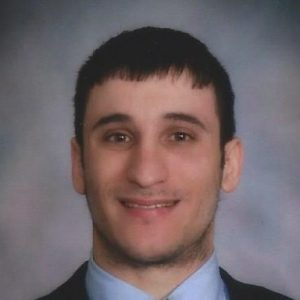
I’ve long believed that the word “disabled” is not an adjective but a past tense verb. I am “disabled” often because of the surrounding environment rather than because of any defect of my brain. In the disability community, there is a tendency to separate terms such as “difference,” “disability,” and “impairment.” These are fluid terms that can overlap, but they can also make an important point about where a disability comes from and what makes something a disability.
The general approach to disability in broader society is known as the medical model of disability, which essentially states that the cause of one’s disability is their differences or impairments, that it is their medical issues that “gives” them a disability. This view contrasts with the emerging social model of disability, which states that differences and impairments are exasperated by unwelcoming settings that essentially “disable” a person from reaching their full potential or being able to thrive. So where the medical model states that an inability to walk makes someone disabled, in the social model, the lack of a wheelchair ramp is the source of a wheelchair user’s disability. The social model can be used to lessen the ill effects of disability without dehumanizing disabled people. However, it often feels that there are no efforts from society at large to move to the social model with more inclusivity.
I was born right after the passage of the Americans with Disabilities Act (ADA), and I’m grateful for the progress that’s been made. However, a lot more needs to be done, and many things that are purported to be solved are not yet solved.
While the ADA regulates and enforces physical access, such as handicap ramps and push buttons for doors, it does not dictate social inclusion. Since I graduated college, I have been largely relegated to remote work. While some disabled people prefer remote work, to me, it is isolating. Socialization is a vital part of emotional development and something that I have felt separated from for my entire life. It certainly would have helped if my peers were made aware that disabled people exist and are worthy of inclusion from an early age. Things as simple as parents and teachers having honest discussions with their kids and authentic media representation of disabled people by disabled creators would have gone a long way in improving the socialization experiences I had throughout my life.
Living in a suburb, very few things are pedestrian-friendly. Ironically, one important accessibility characteristic for a wheelchair user is to live in a “walkable” neighborhood. There’s always a catch, though. Some of the most densely populated cities are not well-designed for wheelchair use. The curbs may be too steep. There may not be enough wheelchair ramps everywhere. The problems of accessibility have been pressing for my entire life but these problems are solvable.
When I was growing up, it was a common experience for my family to call a restaurant and confirm whether it was accessible before making a reservation.
Common replies we would get include:
The entrance was accessible, but the bathrooms were not
The restaurant had booths, but no tables
We would have to travel through the kitchen to get to our seats
“Yeah, there’s only about three steps”
And sometimes, they would simply say no. But as places of public accommodation under the ADA, they’re not supposed to be able to say no. Same for office buildings. Same for any other retail establishment. While some may claim that their pre-ADA buildings are exempt, they may not realize that they are supposed to make their buildings as accessible as possible, or offer alternate service accommodations, even if they cannot fully comply with the guidelines of the law.
More disabled people need a place at the table when it comes to conversations about accessibility accommodations. Public projects need to be undertaken in as many communities as possible to update any infrastructure that does not sufficiently incorporate universal design principles. When disabled people are welcomed in public spaces and retail environments, we become more visible members of society. As more visible participating members of society, our needs and access are more top of mind, and we collectively move into the social model of disability.
Making society accessible is a massive community project. We need to start.
By Jeremy Einbinder


Don’t Risk Injury To You Or A Loved One
Why wait? Give us a call at 877-596-7293 or contact us online to get started!